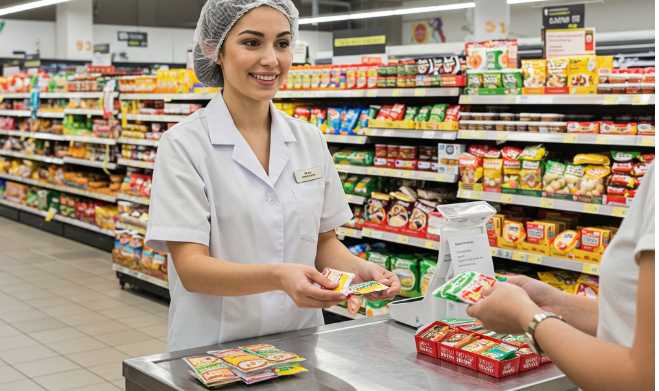I was walking through Sam’s Club the other day, armed with a short, focused shopping list. I knew exactly what I needed—nothing more, nothing less. But as I wandered past a few friendly faces offering free samples of a smoked Irish cheese and warm ham patties, I paused. Free is free, right? So, I gave them a try. Before I knew it, a block of cheese and ham patties, which were absolutely not on my list, ended up in my cart.
That wasn’t a fluke. It’s the power of free samples at work—a tactic used by countless retailers and food brands to change your mind, influence your behavior, and drive more sales.
Let’s explain why that works and what small business owners can learn from it.
Why Free Works
The idea of “free” bypasses our rational brains and taps into something deeper. Behavioral economists like Dan Ariely have written extensively about this in books like Predictably Irrational. Free makes us feel like we’re getting something of value with no downside—no cost, no risk, just a chance to try.
Let’s face it: Would you ever buy an expensive bottle of wine without sampling the vintage first? Probably not. Offering free samples is a powerful way to get new customers to try your product or service. It eliminates uncertainty and invites curiosity. It turns out that people are far more likely to try something new when there’s no perceived risk. That’s why giving away samples isn’t just generous—it’s smart marketing.
The Reciprocity Principle in Action
There’s a well-known principle in psychology called reciprocity. When someone gives us something—even something small—we feel a natural urge to give something back.
In the case of free samples, the “return” is often a purchase. The customer feels a small but meaningful sense of obligation. You gave them a taste; they return the favor by buying the product.
This idea has been explored in depth by Dr. Robert Cialdini in Influence: The Psychology of Persuasion. If you’re a small business owner, I highly recommend checking out his work. I also wrote about how his seven principles can be applied to increase sales conversions in this post: The Seven Principles of Persuasion for Better Sales Conversions.
From Try to Buy: Making It Easy to Say “Yes”
What happened in Sam’s Club is what every business dreams of—an impulse purchase turned into a repeat customer. The cheese and ham patties made it onto my regular shopping list, all because I had a chance to taste them.
It’s the same reason Costco, Trader Joe’s, and even high-end gourmet stores continue to offer samples. They know that tasting removes uncertainty. It builds familiarity, comfort, and trust.
If you run a small business, this idea can apply far beyond food:
- A cleaning service could offer a free trial room.
- A coach could offer a free 15-minute discovery call.
- A software company might give a limited-time free trial.
Think Small, Win Big
You don’t need a massive operation to put this into practice. One of the best strategies is to start small and offer just a taste of your service. The key is that it’s real value, not just fluff.
Here’s how you can use the “free sample” concept in your business:
- Identify a Low-Cost, High-Value Offering: What’s one thing you can give away that won’t break the bank but gives real value to your customer?
- Make It Irresistible: Package it in a way that feels generous. The more it feels like a “gift,” the better.
- Make the Next Step Easy: Once the sample experience is done, what’s the next action? Make sure there’s a clear path to purchase or conversion.
- Follow Up: This is where many small businesses drop the ball. After the free trial or sample, follow up with a simple “Did you like it? Want more?”
Final Thoughts
Free samples work because they break down barriers. They let people experience the product before making a decision. For me, it was cheese and ham patties. For your business, it might be a free eBook, a quick consult, or a bite-sized taste of what you offer.
What “sample” can you offer to turn browsers into buyers?












